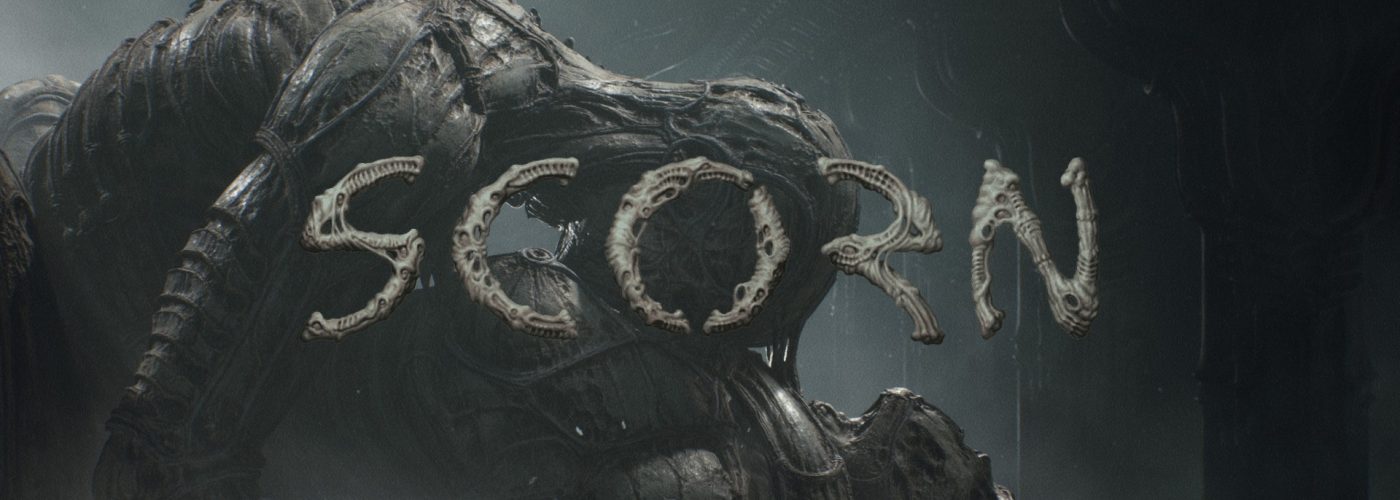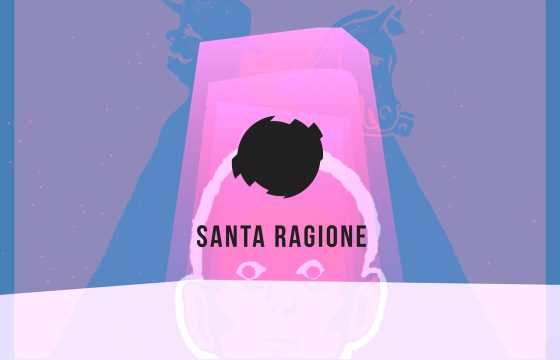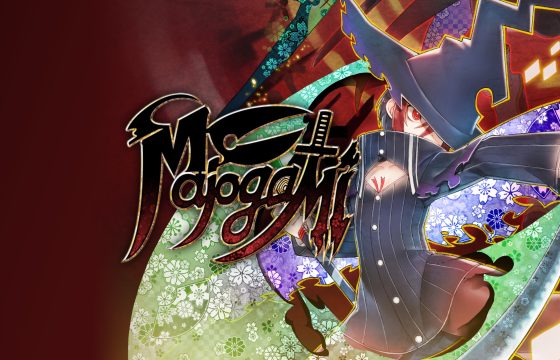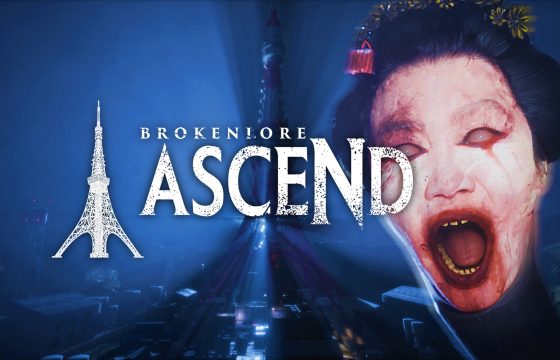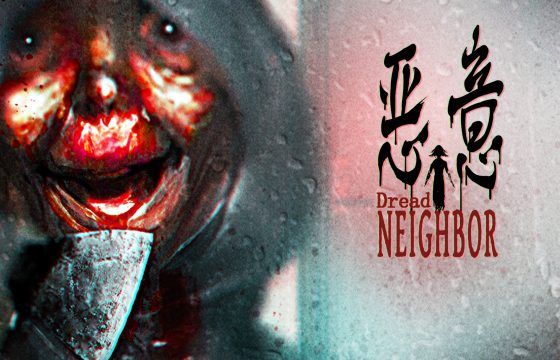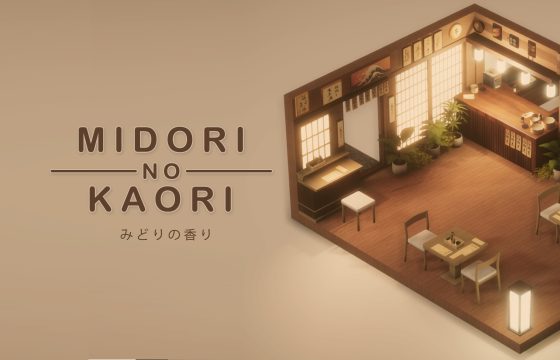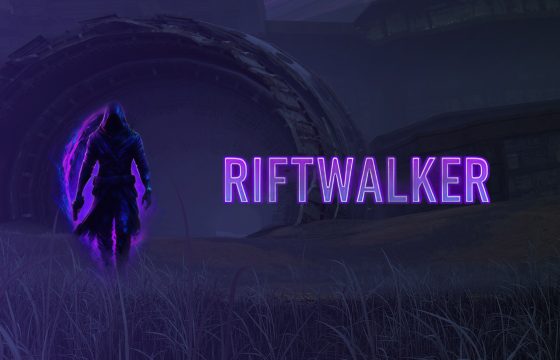A mystical experience of suffering and alienation with enormous narrative depth.
Scorn has left an indelible impression on us. One of those video games that must be experienced in their entirety, resulting from years of development, passion, and expertise, squeezing the players’ minds into a psychological journey where the illusion of nightmare meets realities.
It is a new first-person survival horror game with a strong artistic component, a technical and sound sector that pays close attention to the smallest details, a gameplay based on the resolution of complex puzzles, and a simple but unusual combat system.
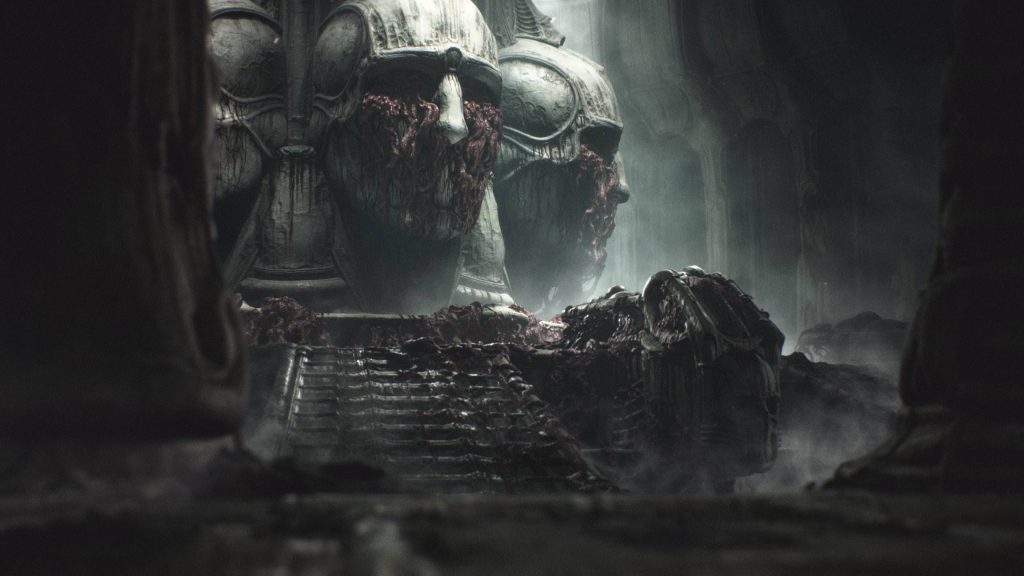
The game, which was released on October 14th for PC and Xbox Series X|S, literally split the independent gaming scene in two, gaining a good share of players thanks to some well-established mechanics, while maintaining a cryptic and mysterious narrative sector that has kept this title in mystery for a long time.
We have encountered a real and disturbing nightmare that overwhelms the senses with its impressive taste for the macabre. An atmospheric and experiential work in which art and suffering form such a perfect union that it opens up new avenues of human knowledge.

And it is from here that we would like to begin analyzing all of the components of the new Ebb Software project. A detailed and in-depth review of Scorn from every angle, revealing its strengths and weaknesses.
And how else could we anticipate what follows if not by quoting one of Friedrich Nietzsche‘s most famous aphorisms, which fits perfectly with the style and art that pervade Scorn‘s deep and dark soul?
“Whoever fights monsters should see to it that in the process he does not become a monster. And if you gaze long enough into an abyss, the abyss will gaze back into you.”

⁓ Friedrich Wilhelm Nietzsche (Maxims and Interludes, Beyond Good And Evil : Part Four)
THE MACABRE DIMENSION OF CORRUPTION AND OBLIVION
Consider entering a mysterious and ancient book that can only be understood through the reader’s experience, memory, and subjectivity. A text whose pages will never reveal themselves clearly unless the reader weaves a close relationship with the experience itself.
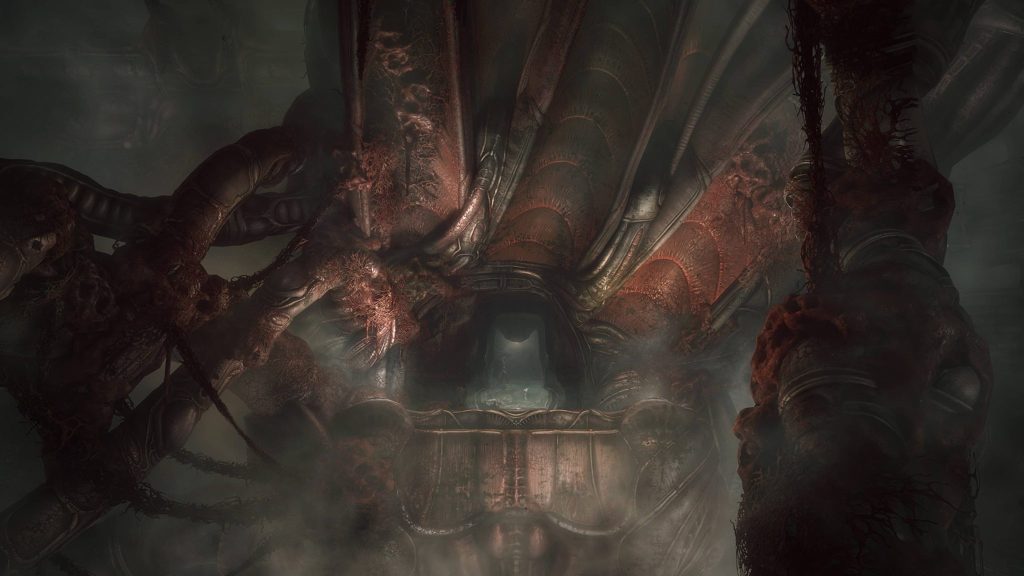
Scorn‘s narrative sector is the polar opposite of what we might call an open book. A macabre and dark psychological journey wrapped in an illusory fog that envelops the protagonist in an intense and shocking introspective experience.
And this is one of the many strokes of genius that distinguish Ebb Software‘s work: the art of instilling doubt and uncertainty in the minds of players. The acuteness of developing a narrative that conceals many deep symbolic meanings, which goes far beyond the first trailers’ apparent sense of disturbance and macabre.
A clever and brilliant narrative technique already used by the Norwegian development studio Playdead in the creation of Inside. The goal is obviously to leave an ending that is open and completely interpretable, so that anyone can construct and decode the ending that best fits their ideas.

Our adventure in Scorn begins with the protagonist’s complicated awakening: a sort of deformed and neglected humanoid who finds himself trapped in a contaminated setting and who will turn out to be the true protagonist of a macabre and extremely disturbing experience.
A remote location in which humanoids have lost control of their own fate. Nature has changed man’s basic functions, transforming him into a mechanical device tasked with unusual daily tasks.
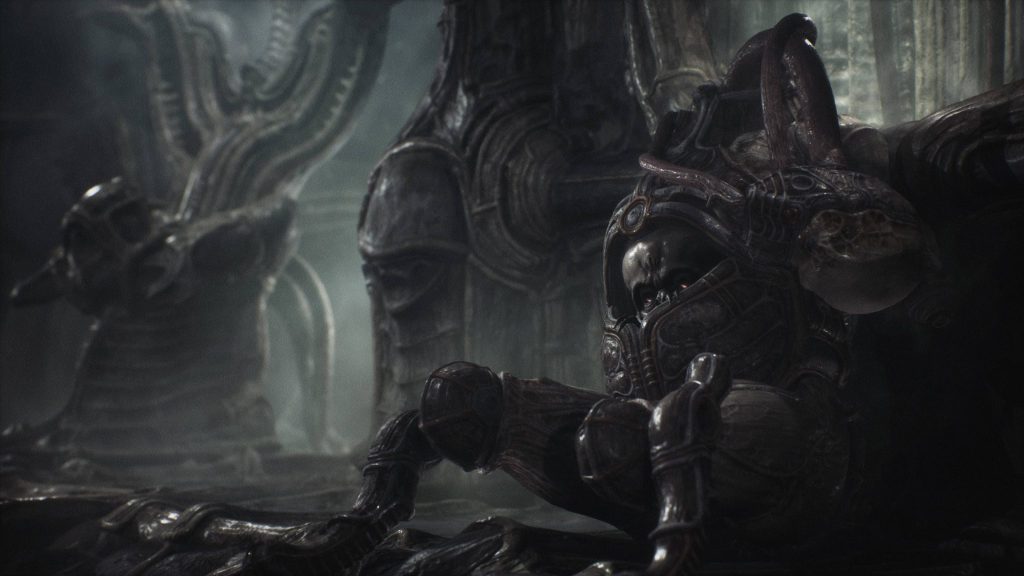
And it is in this corrupted and forgotten land that the manipulation of vital and motor functions results in humanoid machines enslaved to the feeding of this world. Here, the environment dominates the human being, consuming and mutating him to achieve his goal.
A terrifying journey between drama and discovery in which our protagonist will take part in the cruel nature hidden in a completely self-powered artificial place. An ancient machine of pain and death that consumes other people’s minds, turning them into slaves to eternal oblivion.
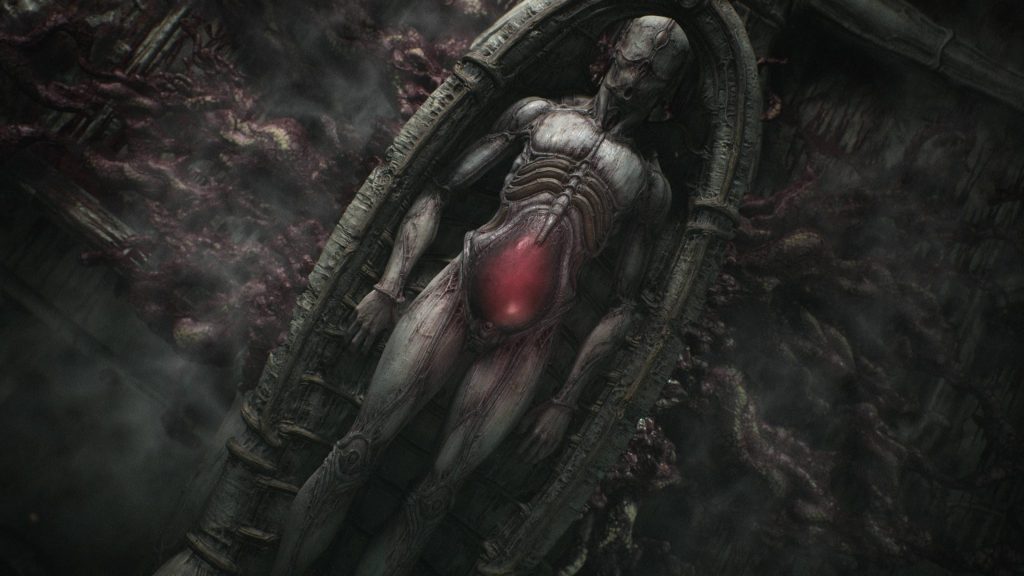
What will become of our protagonist, imprisoned in this limbo of bowels, blood, and alienation? What terrible horrors will he have to endure in order to escape this surreal nightmare? The stakes are extremely high!
THE RUTHLESS LAW OF THE STRONGEST
The desire to create a new and unique video game genre was the main common goal of the Serbian development studio from the beginning. This is especially noticeable not only in the technical sector and sound design, but also in the gameplay development.
In fact, Scorn has an ambivalent playful soul, built on a combat system inspired by classic first-person shooters and a robust and essential mix of environmental puzzles, that we will show you in the following section.
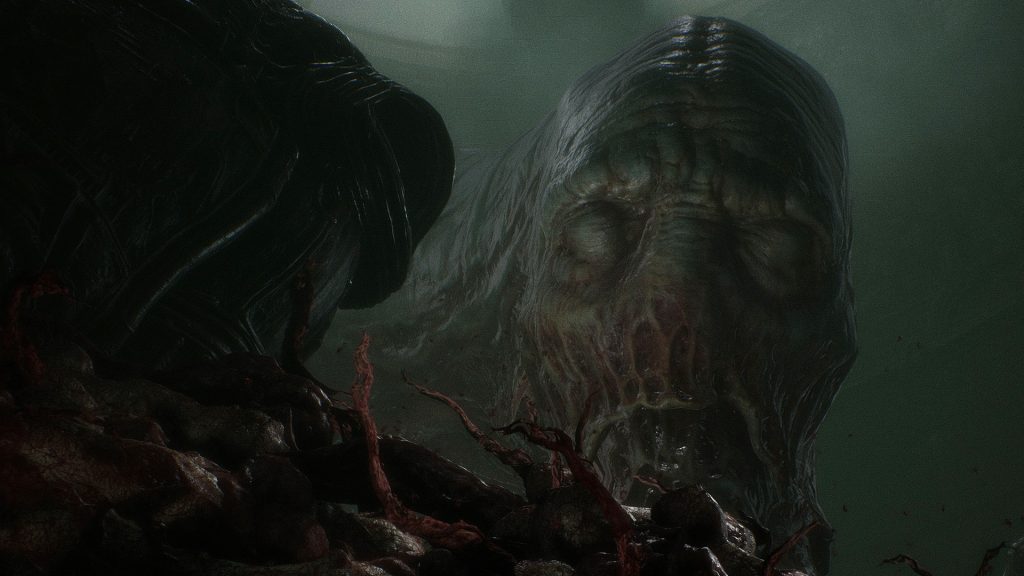
In Scorn, orientation is as follows: learn, experience, die, try again. A difficult learning cycle, but one that will teach anyone the fundamentals of survival, just as life will. This leads to the complete lack of a game map, without which one must orient oneself independently.
In terms of concept, the combat system quickly established itself as a very interesting and ambitious classic first-person shooter, albeit with some flaws that limit its completeness.
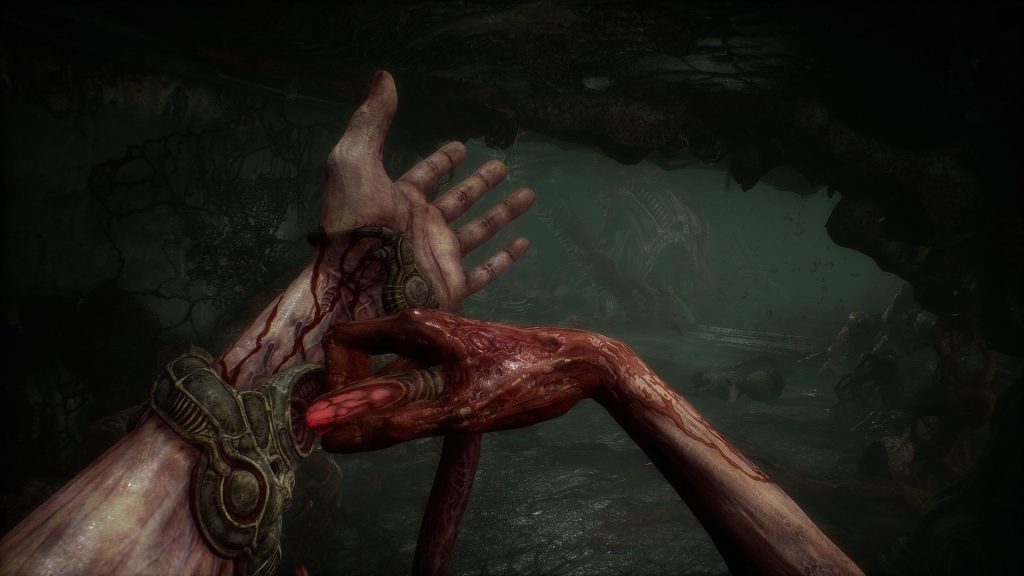
It is difficult, if not impossible, to remain unaffected by Scorn‘s gloomy atmosphere. It’s also hard to explain how much we were impressed by the game’s weapons and ammunition reload animation. A meticulous and maniacal attention to detail that borders on the surreal. And it is the small details that add to the disturbing and dystopian atmosphere.
An incomparable horror that affects all of the players’ senses, both for the viscous and vertebral consistency of the weapons and, to put it mildly, the presence of repulsive enemies. Abominations ready to give us a hard time, chasing and attacking us until they have exterminated every small part of our body.
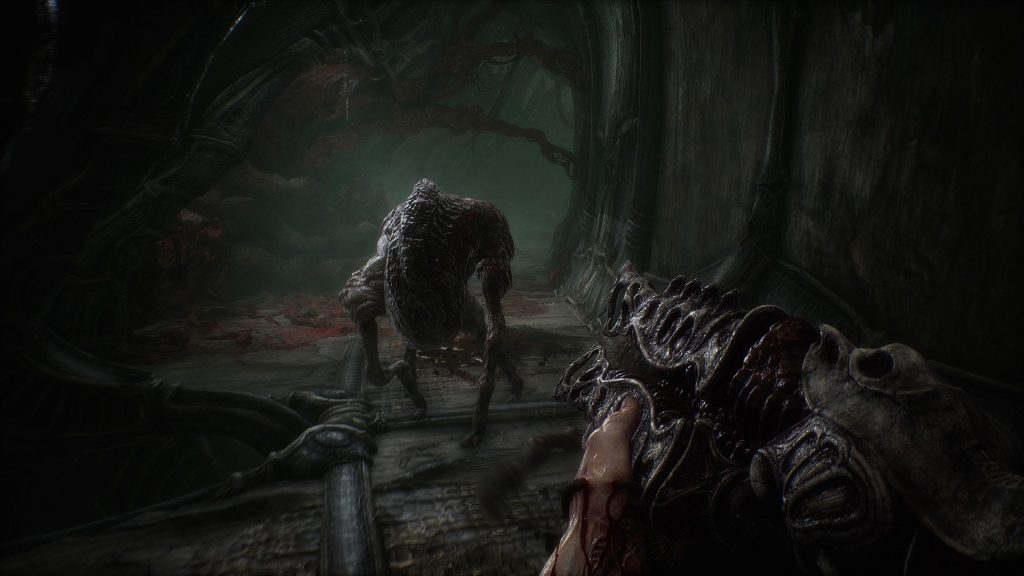
Only when fighting, being hit, or using healing items will health meters and projectiles appear. As a result, you must pay close attention to how you approach the clashes, not to mention that the blows inflicted on you will be far more dangerous than you can imagine.
And it is for these reasons that, despite some flaws, we believe combat is still an important component of Scorn, as well as your only hope of escaping this deadly prison.
THE MACABRE AND HORROR TECHNIQUE
Scorn‘s level design is another pillar that fits perfectly into the production of Ebb Software, thanks to an intelligent construction of environments that always manages to be labyrinthine and claustrophobic while remaining intuitive, if explored wisely.
This is also due to the magnificent graphic sector, which manages to transport us even further on the disturbing journey that is Scorn, with notable particle effects that manage, overall, to improve the already excellent graphics, which are now one of the best seen on Microsoft’s console flagship, alongside the recently released A Plague Tale: Requiem.
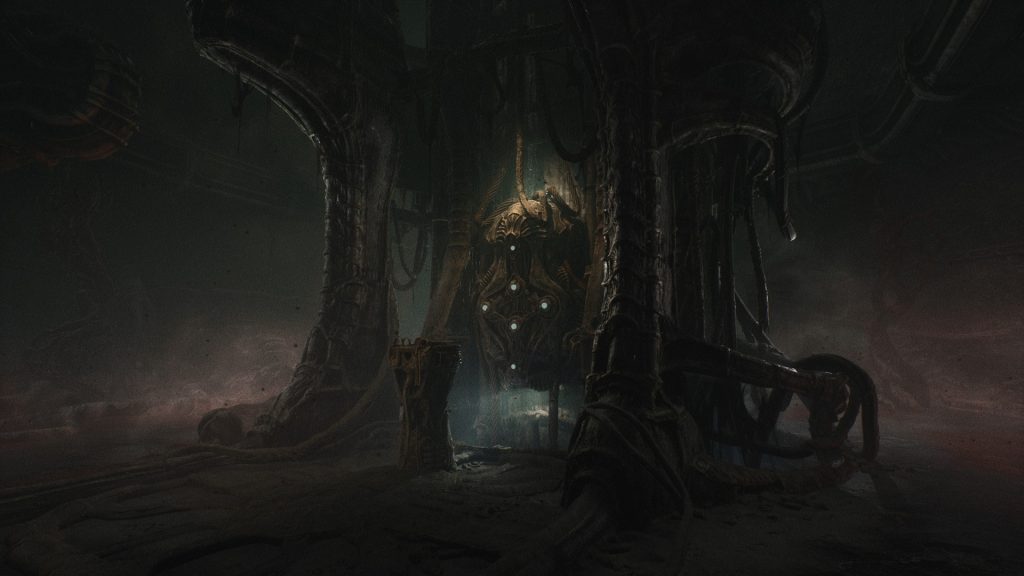
We will be exploring what appear to be bio-mechanical structures and wider-ranging environments as we progress through the story, but we prefer to leave the discovery of this ruined world to you. However, we intend to concentrate on the management of the puzzles that we will have to solve in order to progress in the game.
Ebb Software‘s ability is evident in their construction because, despite only having a few tools at their disposal, each puzzle is well thought out and unique from the previous one, even if, given the playful structure in this sense, the developers could have experimented more in terms of puzzle construction, creating a greater variety of them. Even if some puzzles appear to be simple, they will be difficult to solve, especially for inexperienced hands.
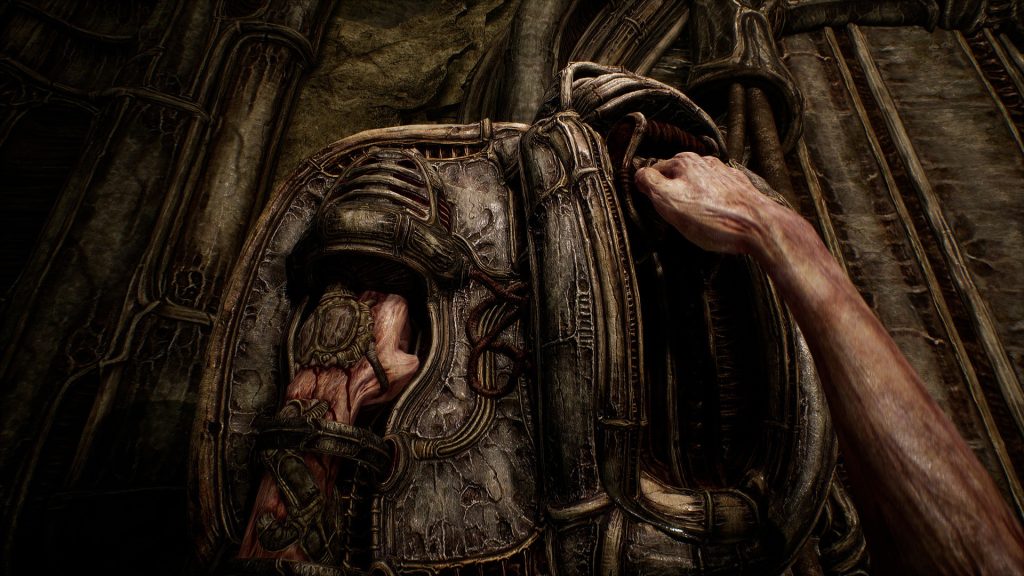
A special mention should be made of the sound sector, which manages to enhance the production with excellent ambient sounds that create the typical sense of fear of the unknown, enriching the entire play structure.
Although there is no dialogue throughout the adventure, and the narrative is built on visual elements that must be sought independently in an unusual way, we find this choice to be a very brave but also winning idea, rewarding the developers’ great efforts in their first project.
ART, LOVE, AND TERROR
Scorn’s artistic direction is without a doubt the product’s spearhead, managing to arouse in the players a sense of despondency that will soon change into a desire to discover the world that is surrounding us and slowly engulfing our internal, crumbling the feeble humanity that remains to us.
Swallowed between a riot of entrails and flesh merging with what appear to be alien structures, or what our society might be in an unspecified future, speculating about the story itself may be difficult given the game’s proclivity for freedom of interpretation. However, due to the vast amount of information available, we will most likely discuss this in greater depth in a future article.
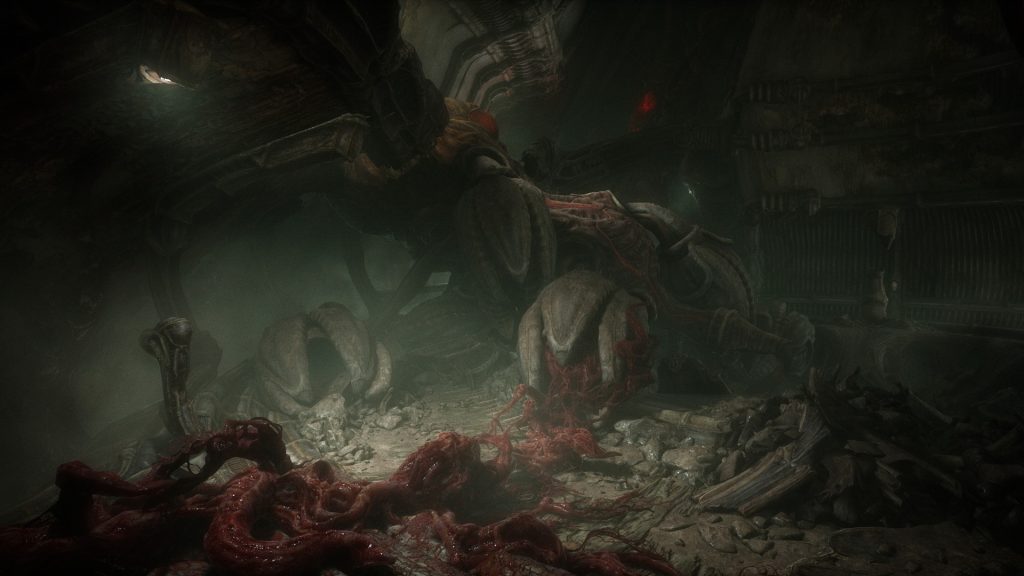
There are undeniable indications of how and how much inspiration Ebb Software drew for the creation of this fascinating world. In fact, we can see two pivotal artistic visions that stand out most prominently in the project’s artistic conformation.
The first source of inspiration was undoubtedly the Polish artist Zdzisław Beksiński.

Beksiński was born in Sanok, a small town in southeastern Poland, on February 24, 1929. His career began in 1958 and ended tragically in 2005, when he was murdered by the son of his butler due to some financial differences.
During his forty-year career, he first dabbled in photography and plastic and metal sculpture. His works were immediately embraced by the public, and he was able to organize an exhibition in his first year of operation.
From the start, the artist emphasized his own distinct artistic characteristics, which would eventually distinguish him in the artistic landscape, photographing men and women with bandaged faces, faces disfigured or erased with photomontage techniques, and vast desolate landscapes.
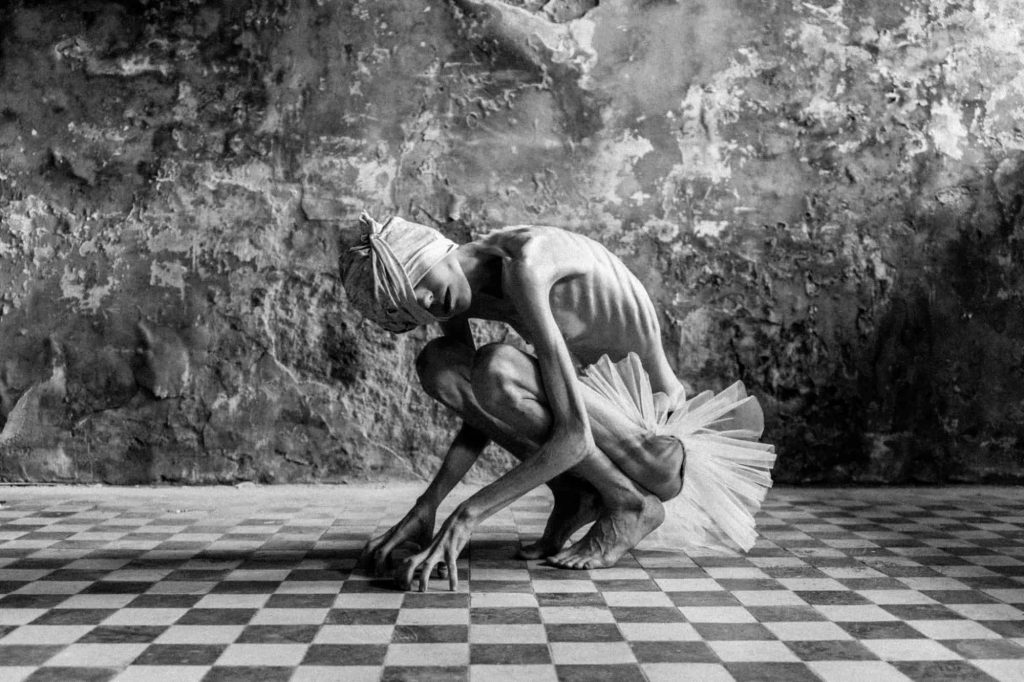
Gradually, during the 1960s, he abandoned photography and sculpture in favor of experimenting with oil paints on masonite, which would become the focal point of his artistic career beginning in 1971, along with his shy and mysterious demeanor.
After his only son died in 1998, he fell into a depressive spiral that forces him to isolate himself even further, abandoning painting and experimenting with digital graphics. All of this prompted him to return to his beloved photography, which he did until his untimely death.
The most astute readers will have guessed where Ebb Software found inspiration for Scorn. This is most noticeable in the exterior sections, which are reminiscent of Beksiński‘s paintings. All of this is due to the use of dull and dying colors, but above all to the disintegration of parts of the same structures in the wind, creating a surreal atmosphere that follows the same decadence that has characterized the artist’s crazy and brilliant mind throughout his long career, partly also for the creation of the many bas-reliefs that we will encounter while exploring the environments.

The second, more obvious source of inspiration is the artist Hans Ruedi Giger.

Giger was born in the Swiss town of Chur in 1940, where he had a happy and peaceful childhood. He developed an early fascination with the strange and gloomy after seeing a human skull in his father’s pharmacy. A love that grew as a result of works of art by surrealist artists such as Salvador Dalì and Jean Cocteau.
The artist studied at the Zurich School of Industrial Design and Applied Arts, where he discovered and honed his skills over time, culminating in the combined use of acrylic paint and the airbrush, with which he will sign many of his subsequent works and give them a distinct style using a bichromism as essential as it is disturbing.
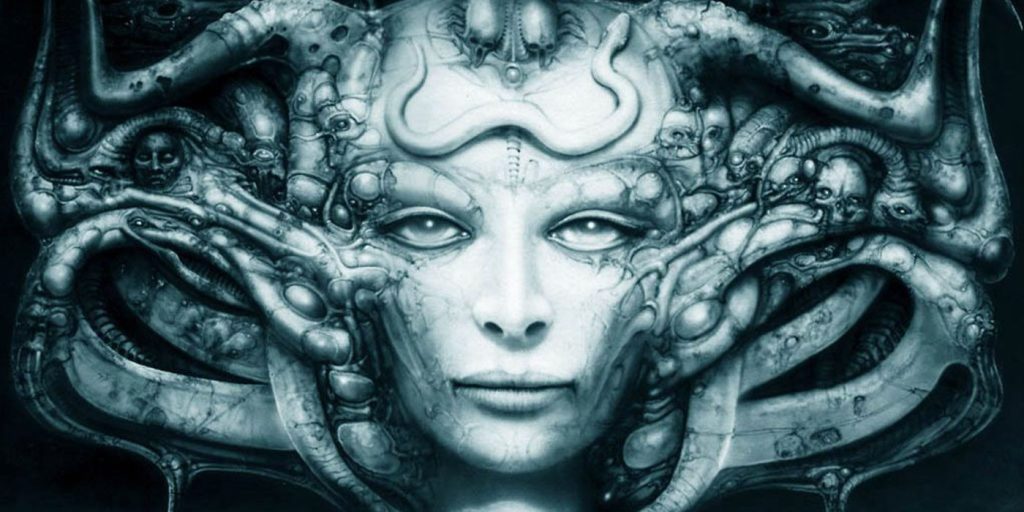
His brilliant invention was the “biomechanoids“: a type of “organic” machine or futuristic organism in which metal and flesh merge to form a whole. This quickly became the cornerstone of his creations, making him well loved and well known around the world from a young age.
During the 1970s, Giger appeared in Hollywood, where he was able to extricate himself from countless roles, including the one that earned him an Oscar for best special effects (in 1980) with the creation of the Alien Xenomorph. He traveled the world for exhibitions because of his own paintings and sculptures, which he eventually used to establish a museum in Switzerland. All of this contributes to a strong bond with some of the game’s many atmospheres. Works that we strongly recommend you admire in order to immerse yourself in what we believe to be a true work of art.
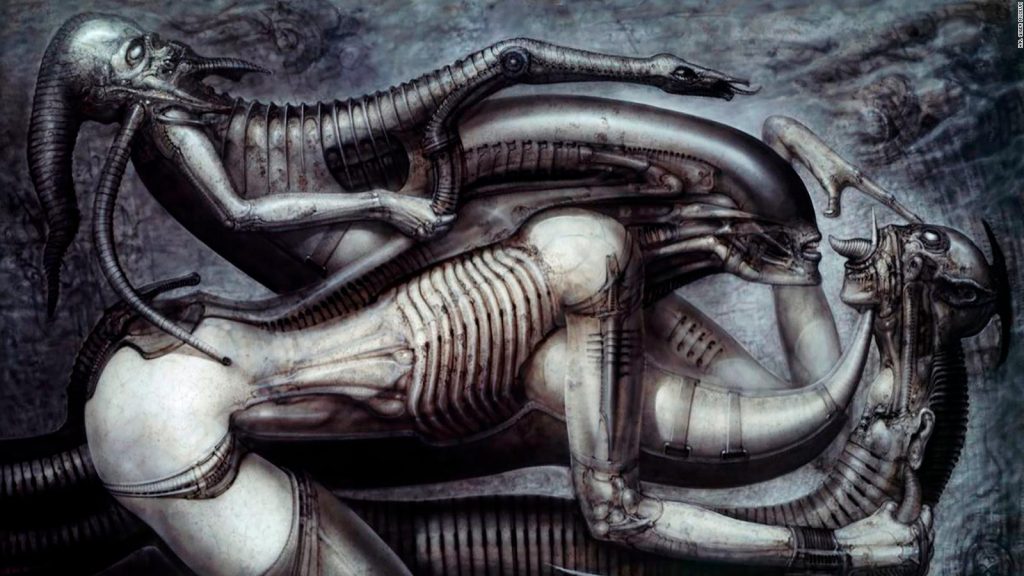
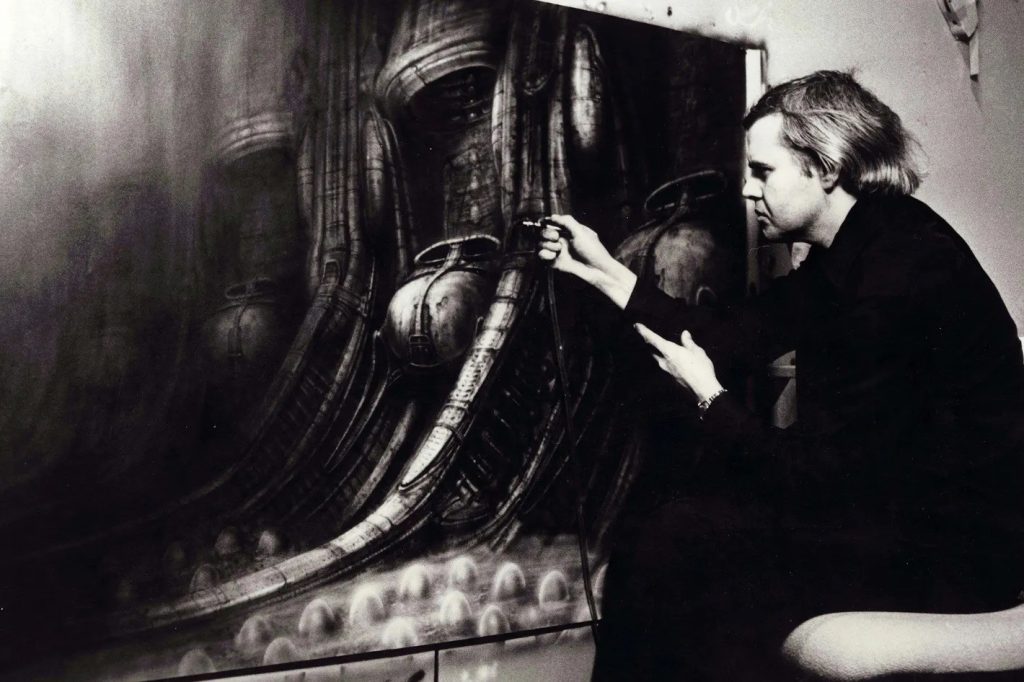
It’s difficult to summarize Giger in a few lines because there are a thousand other things to say about him, such as his involvement in the first draft of the film DUNE, which was never released but was picked up by the insane David Lynch. Consider all of the work done as a set designer, sculptor, and designer between the new and old continents, as well as the countless video games that have drawn inspiration from it, such as Axiom Verge or the well-known Silent Hill saga, in which the Guardian Angel sculpture was reworked to create a monstrous creature.
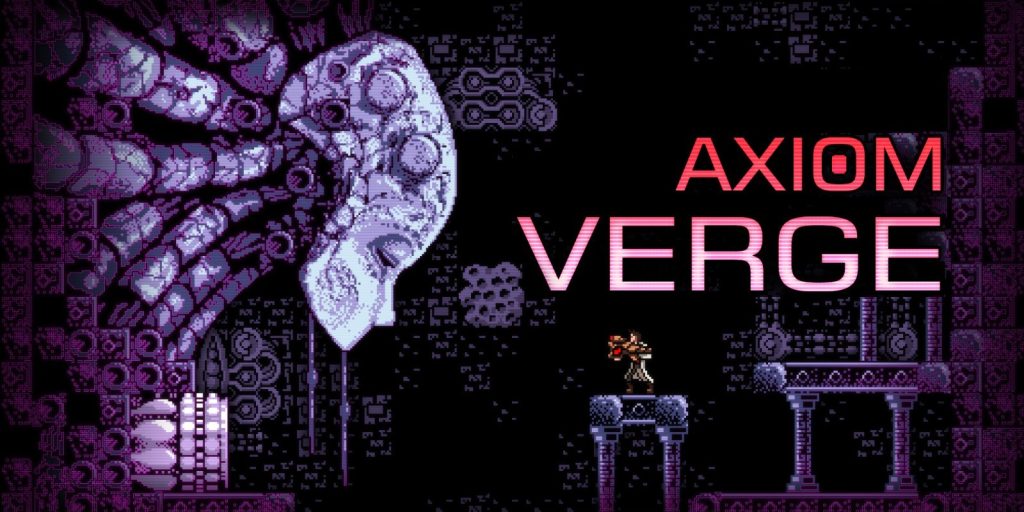
His artistic contribution to the game is obvious and can be appreciated throughout the story, from the design of the narrow environments to the enemies, which closely resemble some of his most famous works. Consider the design of the game’s objects and weapons, as well as the machinery, which are all not-so-veiled transpositions of the aforementioned works.
H.R. Giger died on May 12, 2014, at the age of 74, as a result of the effects of a fall, but he, like the aforementioned Zdzisław Beksiński, lives on through their art, which, today as then, manages to make millions of people fall in love and shiver, while also inspiring an equal number.
Because, as Ugo Foscolo once said, “A man never dies if there is someone who remembers him ”.
DEFACED BODIES, TORMENTED SOULS
Scorn is a dark journey that envelops us and transports us to a disfigured and uprooted utopian humanity. A project that focuses on the combination of storytelling and art while remaining involved in the development of the game’s other components.

A project with flaws and imperfections that still make it a one-of-a-kind video game. A radical and outlandish concept that will give birth to a new genre, a new species. And that’s how Ebb Software makes its debut!
For these reasons, we rewarded the Serbian team’s courage and good intentions. We recognize how challenging it is to break into the modern gaming industry. We gave Ebb Software a slightly higher final score because we were so impressed with its concept. Consider it an honorable mention for such a daring piece of work.

